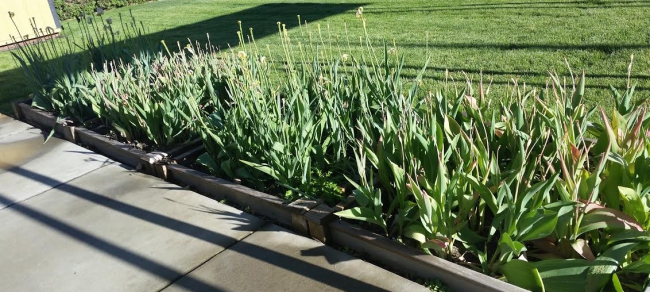The recent graduates of the Idaho Master Gardener program are all trained and ready to help answer your plant and pest questions. The Master Gardeners meet every Thursday from 1-3 pm at the Washington County Extension office to look over samples, research and provide evidence based answers to your gardening issues. Last year we provided our plant clinic notes to local newspapers and got a lot of positive feedback so we are going to continue the articles this year.
Leaf galls on trees
Leaf galls are fairly common on trees and shrubs. A gall is actually plant tissue that has developed as the result of feeding or other activity of insects or mites. Plant hormones are involved when the pest interferes with leaf development in the spring. The leaf brought into the plant clinic was from an elm tree and the galls were caused by aphid feeding. Galls are typically not harmful to the host plant, unless the plant is very young or already unhealthy. For insects that overwinter on the host plant, horticultural oil applications can be made before insect activity begins in the spring. The fuzzy little growths house the eggs for the next generation…kind of creepy if you ask me.
Tulip foliage and seedsThe Extension office had a beautiful tulip display this Spring. We have early red and white tulips (Weiser school colors) followed by gold and black mid-season tulips (U of I colors) that were planted 3 years ago and continue to flower more each year. Now we are at that awkward stage of browning tulip foliage. If we want the tulips to be perennial we have to wait till the foliage has died back and can easily be tugged off the bulb. If not, our tulips won’t be perennial and return next year. We also had some with seed pods. These
seeds are viable and would eventually produce a flowering plant, but the results would be unpredictable because of cross pollination. It’s recommended that these be cut off so the plant puts all its energy into growing the bulb instead of producing seed.
Plants poisonous to livestock
There are several common weed species that are harmful to livestock if eaten. Luckily, most livestock won’t eat these plants as their first choice and will only eat them if left nothing else in a pasture. We had a seed pod and leaf sample brought in that we were unfamiliar with and finally identified it as seaside arrowgrass. It is a native grass species that prefers swampy areas with alkaline soil. It contains hydrocyanic acid, especially when drought- or frost-stressed, which makes it highly toxic to livestock, even in relatively small amounts ingested. Suggestions for control include removing and burning seed pods to prevent spreading and use of herbicides before flowering.
Montessa Young
Extension Educator
University of Idaho, Washington County
485 E. Third
Weiser, ID 83672
Office: 208-414-0415
Website: extension.uidaho.edu/Washington
Facebook: www.facebook.com/uiextwashington



































